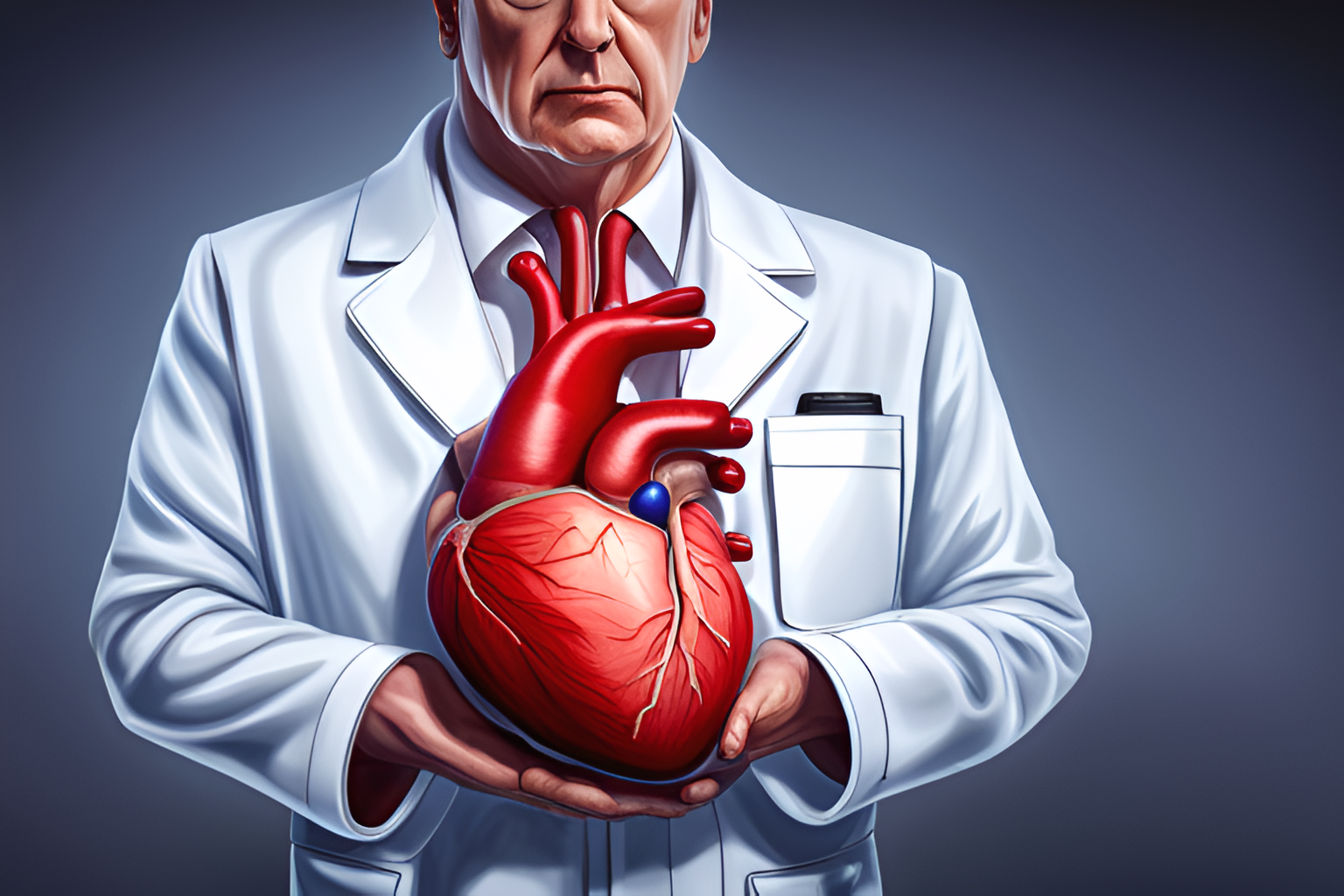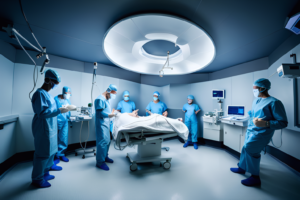Medical Marvels of the 1980s
Introduction
Most people are unaware that the groundbreaking era of artificial hearts began in the 1980s. This pivotal decade they have witnessed remarkable advancements in medical science and technology, leading to the successful implantation of artificial hearts in patients with severe heart conditions. The 1980s marked a turning point in cardiac medicine, with surgeons and engineers working hand in hand to develop and refine life-saving devices. Let’s delve into this extraordinary era, exploring the remarkable achievements and their profound impact on cardiovascular medicine.
Definition of Medical Device
Essentially, a medical device is any tool, instrument, machine, implant, or other similar article intended for diagnosis, treatment, or prevention of disease or other medical conditions. The classification of medical devices is based on the level of risk they pose to patients and users. There are three classes of medical devices: Class I, Class II, and Class III. Class I devices have the lowest risk, while Class III devices have the highest risk. Overall, the classification of medical devices is critical to ensuring that patients and users are protected from potential harm and that the devices are effective in their intended use.
The Rise of Mechanical Heart Support
In the early 1980s, the concept of using mechanical devices to support failing hearts gained significant momentum. One notable innovation was the intra-aortic balloon pump. This short-term device temporarily reduces the heart’s workload, allowing it to recover after a heart attack or open-heart surgery. The intra-aortic balloon pump consisted of a balloon placed in the aorta, which would inflate and deflate in sync with the heart’s rhythm, enhancing blood flow and easing the strain on the heart.
The Birth of Left Ventricular Assist Devices
Intending to provide greater blood flow to patients with profound heart failure, researchers focused on developing devices that could augment, substitute, or replace the function of a compromised heart. In the early 1970s, a surgical research program led by Dr. Denton Cooley and his associates at the Texas Heart Institute embarked on this journey. They developed the thermal electron model seven left ventricular assist device (LVAD).
The Thermal Electron Model Seven LVAD
The thermal electron model seven LVAD was the first government-sponsored implantable LVAD. It was designed to rest the heart and allow the recovery of the heart muscle. The device consisted of an inlet tube that penetrated the diaphragm and was connected to the heart, taking blood from the left ventricle. The outflow from the device was directed into the abdominal aorta, ensuring adequate blood flow throughout the body. In December 1975, Dr. Denton Cooley implanted the model seven LVAD in humans with varying degrees of success. This early success demonstrated the potential of mechanical heart support in aiding patients in dire need.
‘
Progress Towards Total Artificial Hearts
While LVADs supported failing hearts significantly, the quest for a permanent solution continued. Dr. Ted Suzhou Ikutsu, a Willem Kolff’s team member at the Cleveland Clinic, played a significant role in developing the total artificial heart. At the Texas Heart Institute, Dr. Ikutsu and his team designed and refined the Ikutsu 3, the most promising artificial heart design at that time.
The Ikutsu 3 Total Artificial Heart
In 1981, the Ikutsu 3 total artificial heart achieved a significant milestone when it sustained the life of 36-year-old Willa Broadus Mufas for 55 hours. This remarkable feat demonstrated the potential of artificial hearts as a bridge to heart transplantation. The Ikutsu 3 total artificial heart was a seamless unit containing two blood chambers, a pumping diaphragm, and prosthetic valves for the inflow and outflow of blood. An external pneumatic drive console powered it. Although Mufas, unfortunately, faced complications and did not survive long after the transplantation, his case paved the way for further advancements in artificial heart technology.
The Jarvik 7 Total Artificial Heart
Building upon the success of the Ikutsu 3, the Jarvik 7 total artificial heart entered the scene in the early 1980s. Unlike its predecessors, the Jarvik 7 was implanted as a permanent heart replacement rather than a bridge to transplantation. Barney Clark became the first recipient of the Jarvik 7 in 1982, leading to a new wave of clinical artificial heart research. The device consisted of two pumping chambers and was driven by an external pneumatic drive console. Clark’s case was highly publicized and garnered significant attention, bringing artificial hearts into the public consciousness.
Advancements in Left Ventricular Assist Devices
Throughout the 1980s, significant progress was made in developing left ventricular assist devices (LVADs). The HeartMate LVAD, designed by engineers at the Texas Heart Institute, emerged as one of the most successful devices of its time. It featured internal surfaces that facilitated the build-up of a natural biological lining, resembling the inner wall of a blood vessel. This innovative design provided a clot-resistant blood flow environment, reducing the risk of clot-related complications. The HeartMate LVAD showcased remarkable longevity and reliability, supporting patients for extended periods until a heart transplant became available.

The Hemo Pump and Miniaturization
In 1988, another groundbreaking development took place with the implantation of the world’s smallest circulatory assist pump, the Hemo Pump. This miniaturized device, approximately the size of a pencil eraser, offered acute assistance for patients with acute heart conditions. Unlike traditional implantable devices, the Hemo Pump could be inserted through an artery and placed directly into the heart, providing immediate support. Its compact size and minimally invasive nature revolutionized the field of mechanical circulatory support.
The Pursuit of Longevity and Reliability
While progress was made with LVADs and miniaturized pumps, the search for a truly long-lasting and reliable total artificial heart continued. Researchers aimed to develop devices that could seamlessly integrate with the patient’s body, mimicking the natural heart’s function. The National Heart, Lung, and Blood Institute awarded various research institutions and companies contracts to develop wholly implantable electro-hydraulic total artificial hearts. Animal studies were conducted to evaluate the feasibility and performance of these devices, paving the way for future advancements.
Conclusion
The 1980s witnessed a revolution in artificial heart technology, with pioneering achievements that transformed the landscape of cardiac medicine. From the early mechanical heart support devices to the development of total artificial hearts and advanced LVADs, this era showcased the dedication and collaboration of surgeons, engineers, and researchers in the pursuit of saving lives. While challenges persisted, the remarkable progress made during the 1980s laid the foundation for subsequent advancements, ultimately leading to improved outcomes for patients with severe heart conditions. The legacy of the 1980s remains a testament to human ingenuity and the relentless pursuit of innovation in the field of cardiovascular medicine.
“I will always be grateful to my doctor for performing my heart surgery in the 80s. Thanks to his expertise and the advancements in medical technology, I am still here today, enjoying life to the fullest. I remember feeling slightly nervous before the operation, but the doctor and his team were reassuring and supportive. I am forever thankful for their care and dedication to my well-being.”
– Jonah Barr, a heart surgery patient in 1987
Credits are due:
The 1980s – It never ends
You gotta try this amazing link that teleports you to another random article. Try it!
